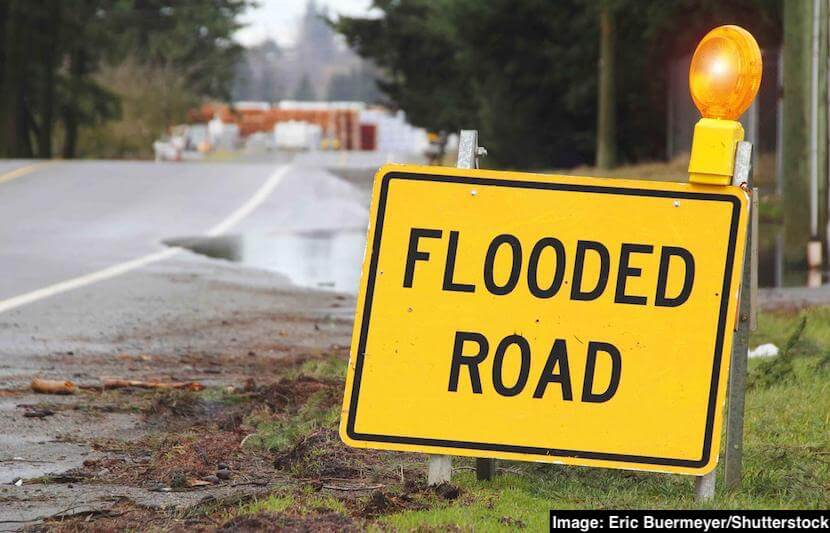Climate change and other human activities are amplifying the likelihood and intensity of flash floods, a new study by engineers at Columbia University suggests.
The study, which uses long-term weather data from across the world to decipher climate trends, demonstrates that increasing atmospheric temperatures are causing higher storm runoff and precipitation extremes, in turn making damaging flash flood events more likely.
The study also finds that human activities that affect land use and land cover, such as deforestation and urban expansion, have exacerbated the risks associated with flash floods by increasing storm runoff extremes.
The study
Using daily runoff data from the Global Runoff Data Centre (GRDC) and daily precipitation and near-surface air temperature data from the Global Summary of the Day (GSOD), the team performed a global hydrology analysis — an analysis of the flow of water along earth’s surface — to show how precipitation and storm runoff extremes have responded to the warming global climate.
“We use weather data and discharge data (long-term and relatively global) to evaluate trends as a function of atmospheric temperature,” said lead researcher Pierre Gentine, an associate professor of earth and environmental engineering at Columbia University who is also affiliated with its Earth Institute.
“To avoid any potential noise due to year-to-year climate variability, we have spliced the periods into 10-year values to further check whether the trends were significant.”
The study showed a significant increase in the intensity of precipitation. Gentine explained that with an increased temperature, the atmosphere can hold more water vapor, resulting in more precipitation.
While previous studies studies have observed that precipitation has increased as a result of warming temperatures, the new study is the first to examine how storm runoff extremes have responded.
The researchers found that storm runoff extremes actually changed more dramatically to shifts in the global climate and other human activities than did precipitation. As a result, we can expect to see runoff extremes increase dramatically in the near future.
This all increases the likelihood and dangers of flash flooding.
Costs of flash floods
In 2018, communities in North and South Carolina were devastated by flooding caused by Hurricane Florence, the wettest tropical cyclone ever recorded in either state. It was the second time in as many years that a major hurricane caused major flooding in the Carolinas, after Hurricane Matthew dumped over 18 inches of rain in some areas in 2016, causing record river flooding and the deaths of 28 individuals in the two states.
In California, extended drought periods have given way to destructive rainy seasons. After one of the most severe droughts in the state’s recent history — a dry period that lasted six years between 2011 and 2017 — Northern California experienced the wettest winter in a century of record-keeping, causing floods throughout the state. There is evidence that the recent extreme weather patterns in the state are likely to increase as the atmosphere warms.
The new study shows that flooding is increasing not only in the U.S., but across the globe, bearing a significant human cost.
Flash floods cause more deaths, property damage and agricultural losses every year than any other extreme weather event, and they have gradually grown more destructive over the past 50 years.
Over the past decade, flash floods have caused as much as $30 billion in damage globally.
Furthermore, 1 billion people live in floodplains across the globe. If flash flooding worsens as this study suggests, the need to protect these populations becomes paramount.
“It shows that flooding is increasing a lot globally,” said Gentine. “Therefore our new infrastructures need to take into account those increases in precipitation and floods.”
What can be done?
This could mean constructing new, green infrastructure that reduces runoff and protects floodplains. It also means improving our warning signals in the event of a flood.
In both respects, the new study could help us do so, said Gentine.
“Our work helps explain the underlying physical mechanisms related to the intensification of precipitation and runoff extremes,” Gentine said in a statement.
“This will help improve flood forecasting and early-warning alerts. Our findings can help provide scientific guidance for infrastructure and ecosystem resilience planning, and could help formulate strategies for tackling climate change.”



